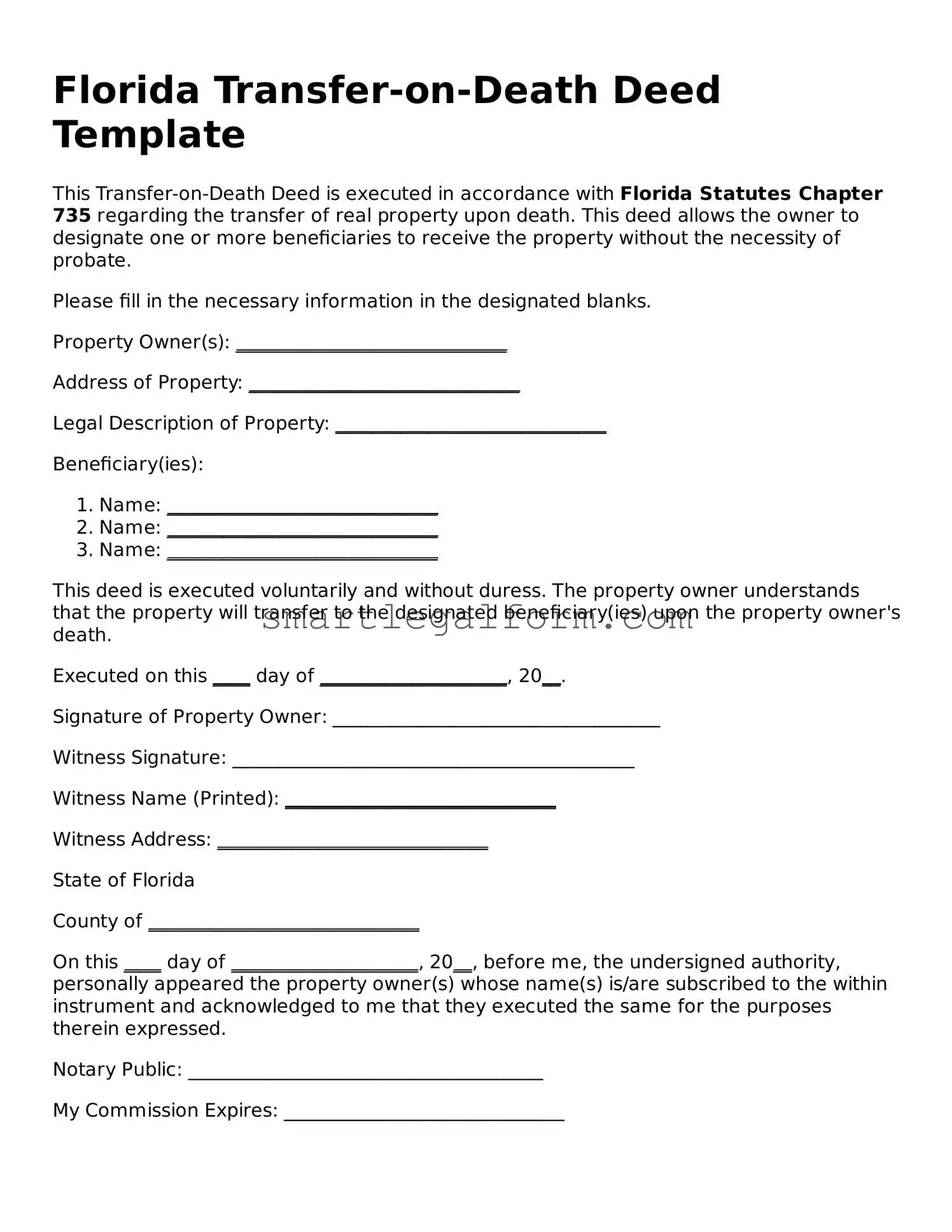Florida Transfer-on-Death Deed Template
This Transfer-on-Death Deed is executed in accordance with Florida Statutes Chapter 735 regarding the transfer of real property upon death. This deed allows the owner to designate one or more beneficiaries to receive the property without the necessity of probate.
Please fill in the necessary information in the designated blanks.
Property Owner(s): _____________________________
Address of Property: _____________________________
Legal Description of Property: _____________________________
Beneficiary(ies):
- Name: _____________________________
- Name: _____________________________
- Name: _____________________________
This deed is executed voluntarily and without duress. The property owner understands that the property will transfer to the designated beneficiary(ies) upon the property owner's death.
Executed on this ____ day of ____________________, 20__.
Signature of Property Owner: ___________________________________
Witness Signature: ___________________________________________
Witness Name (Printed): _____________________________
Witness Address: _____________________________
State of Florida
County of _____________________________
On this ____ day of ____________________, 20__, before me, the undersigned authority, personally appeared the property owner(s) whose name(s) is/are subscribed to the within instrument and acknowledged to me that they executed the same for the purposes therein expressed.
Notary Public: ______________________________________
My Commission Expires: ______________________________
